About our Quality Logo and our Certification Process
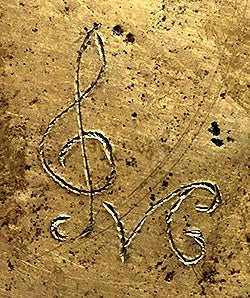
|
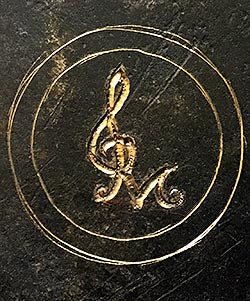 |
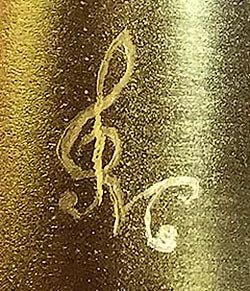 |
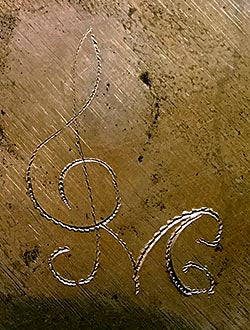 |
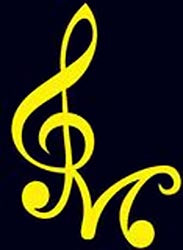
Each Tibetan singing bowl, Burma temple gong and Tubular Bell chime engraved with our logo has been individually hand selected and accurately analyzed by Heaven of Sound™ and is certified to the Planetary Healing Vibration just as we describe it.
Our custom instruments also proudly bear this promise of excellence!
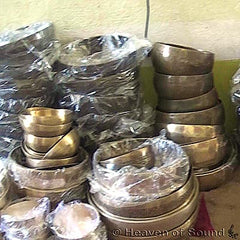 The repeated heating and hammering required to shape Tibetan singing bowls and Burma gongs produces the unique sound print of each instrument. And the further steps (grinding the top flat, etching, brushing, etc.) to finish the instrument will influence the sound further. A sharp blow or a drop will also change the sound, sometimes damaging it beyond repair.
The repeated heating and hammering required to shape Tibetan singing bowls and Burma gongs produces the unique sound print of each instrument. And the further steps (grinding the top flat, etching, brushing, etc.) to finish the instrument will influence the sound further. A sharp blow or a drop will also change the sound, sometimes damaging it beyond repair. While we can and do carefully tune the (custom) sound instruments that we ourselves build, we can NOT do this for the individual hand hammered sound instrument like the singing bowls or gongs we carry.
To find the Tibetan singing bowls (and Burma gongs) we offer in our shop, we travel to India and test literally thousands of singing bowls. Approximately only 6-10% percent of all the singing bowls we test will meet our strict criteria:
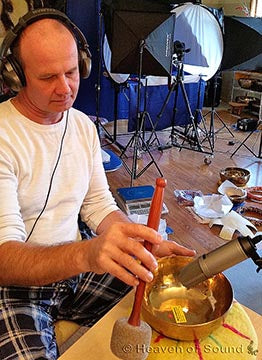
- The bowl must have a fundamental planetary or cosmic vibration, a correct chakra or Solfeggio frequency or an exact musical note
- The bowl must have a supreme sound quality
- The bowl must be well hand made and stable in construction
Because Tibetan singing bowls are hand crafted, the frequency produced will vary slightly around the circumference. To measure the bowl each testing recording is made with the bowl struck all the way around, thus giving an accurate measurement of the frequencies the bowl produces. And as temperature does play a role in the sound produced by metal instruments, we also measure at a room temperature between 68 and 72 degrees F.
Burma Gongs will give pretty much the same frequency reading no matter where on the playing surface, which is the central nipple, it is struck. The above mentioned criteria apply to Burma gongs as well.
The custom instruments that we build, by the nature of their design and construction are tuned (or tunable) to specific frequencies like the Planetary or Cosmic Healing Vibrations or Chakra tones.
Due to their nature all these overtone sound instruments have a complex audio spectrum with one or more fundamentals, binaural beats and many more 1st, 2nd and higher overtones and a simple guitar tuner is definitely inadequate and can NOT be used to determine the different vibrations. Therefore we use a professional scientific audio spectral analyzing system to record, analyze, determine and certify the different fundamental and overtone frequencies accurately of our Tibetan singing bowls and Burma gongs for you.  What we certify is that the instrument we certify, when played in the proper* manner, will produce the Planetary Healing Vibration frequencies identified in the certificate. In the certificate you also will find information about the achievable healing effects and the areas where to safely apply the singing bowl. All of the labeled frequencies in the singing bowl or gong will be identified and often additional overtones not noted in the bowl's or gong's labels will also be listed.
What we certify is that the instrument we certify, when played in the proper* manner, will produce the Planetary Healing Vibration frequencies identified in the certificate. In the certificate you also will find information about the achievable healing effects and the areas where to safely apply the singing bowl. All of the labeled frequencies in the singing bowl or gong will be identified and often additional overtones not noted in the bowl's or gong's labels will also be listed.
 The certificate which we deliver with each single Tibetan singing bowl or Burma gong we sell, identifies the frequency(s) measured, the base or fundamental frequency of the associated Planetary Vibration and the overtones. The certificate also provides a brief description of those frequencies and their uses and placement on or near the body. Any precautions for the use of some of the stronger frequencies will be noted. The audio spectrum of the instrument in the form of a graph is also included. Every singing bowl or gong is identified by our number, the weight of the bowl/gong and the type (Bengali, engraved,matte, plain etc.).
The certificate which we deliver with each single Tibetan singing bowl or Burma gong we sell, identifies the frequency(s) measured, the base or fundamental frequency of the associated Planetary Vibration and the overtones. The certificate also provides a brief description of those frequencies and their uses and placement on or near the body. Any precautions for the use of some of the stronger frequencies will be noted. The audio spectrum of the instrument in the form of a graph is also included. Every singing bowl or gong is identified by our number, the weight of the bowl/gong and the type (Bengali, engraved,matte, plain etc.).
The buyer is encouraged to discover where on the instrument to strike to achieve the optimum sound. Our seminars show that the favored spot will actually vary - different persons will prefer different spots on the same bowl. If you are interested in learning more about your instrument and its healing sound potential you might be interested in registering to one of our introductory seminars and classes.
*): Brass, bronze or copper instruments struck too hard or with unsuitable objects will not ring properly and such actions may damage them. Stringed instruments must be tuned. All instruments and their sound (tones) are influenced by extremes of temperature and humidity.









